Top speed 121 km/h Length 8.33 m Unit cost 5,465–5,465 USD | Wingspan 13 m Introduced 1915 Number of seats 2 | |
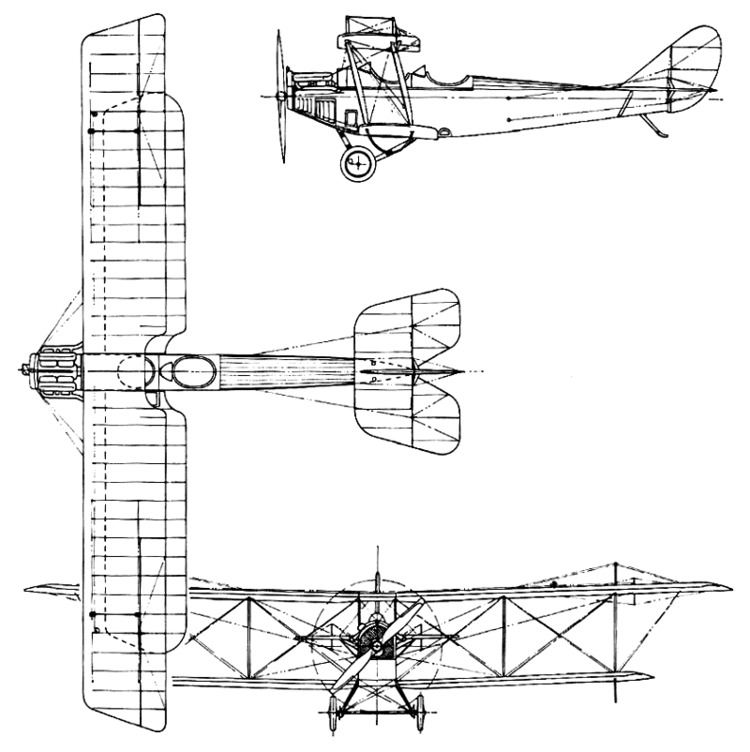 | ||
Manufacturer Curtiss Aeroplane and Motor Company | ||
The Curtiss JN-4 "Jenny" was one of a series of "JN" biplanes built by the Curtiss Aeroplane Company of Hammondsport, New York, later the Curtiss Aeroplane and Motor Company. Although the Curtiss JN series was originally produced as a training aircraft for the U.S. Army, the "Jenny" (the common nickname derived from "JN-4", with an open-topped four appearing as a Y) continued after World War I as a civil aircraft, as it became the "backbone of American postwar [civil] aviation." Thousands of surplus Jennys were sold at bargain prices to private owners in the years after the war and became central to the barnstorming era that helped awaken America to civil aviation through much of the 1920s.
Contents
- Microsoft fs 2004 curtiss jn 4 jenny honor
- Design and development
- Operational history
- Notable firsts
- Variants
- Specials
- Military operators
- Civil operators
- Survivors
- Specifications JN 4D
- The Inverted Jenny stamp
- Notable appearances in media
- References
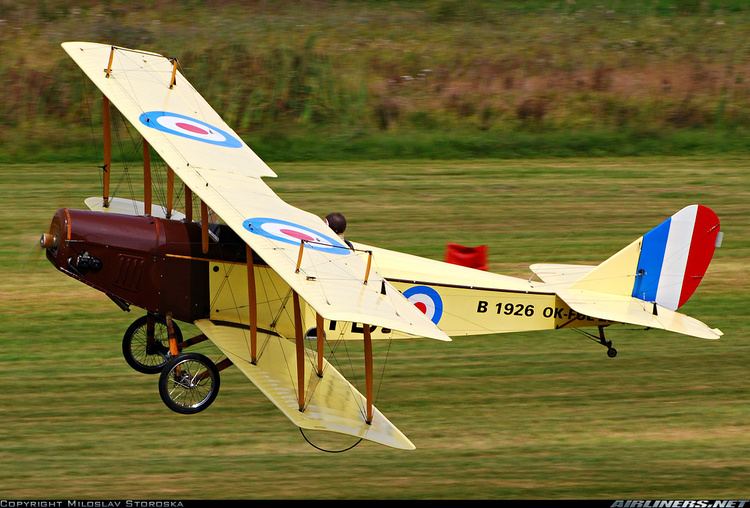
Microsoft fs 2004 curtiss jn 4 jenny honor
Design and development
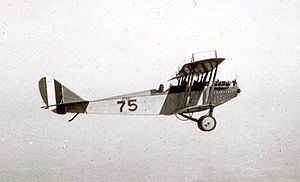
Curtiss combined the best features of the model J and model N trainers, built for the Army and Navy, and began producing the JN or "Jenny" series of aircraft in 1915. Curtiss built only a limited number of the JN-1 and JN-2 biplanes. The design was commissioned by Glenn Curtiss from Englishman Benjamin Douglas Thomas, formerly of the Sopwith Aviation Company.

The JN-2 was an equal-span biplane with ailerons controlled by a shoulder yoke in the aft cockpit. It was deficient in performance, particularly climbing, because of excessive weight. The improved JN-3 incorporated unequal spans with ailerons only on the upper wings, controlled by a wheel. In addition, a foot bar was added to control the rudder.
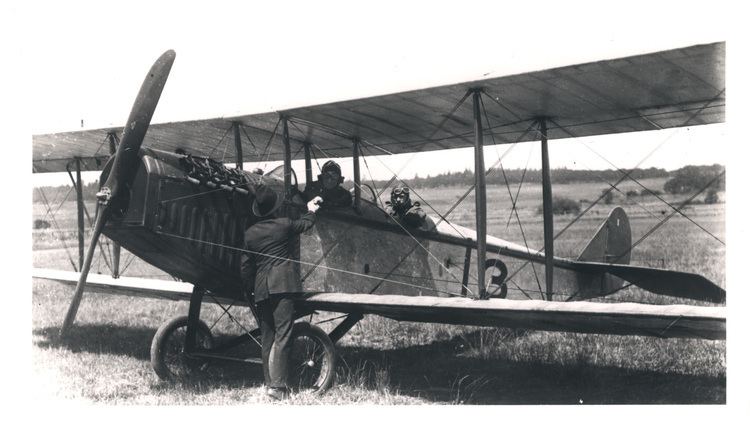
The 1st Aero Squadron of the Aviation Section, U.S. Signal Corps received eight JN-2s at San Diego in July 1915. The squadron was transferred to Fort Sill, Oklahoma, in August to work with the Field Artillery School, during which one JN-2 crashed, resulting in a fatality. The pilots of the squadron met with its commander, Capt. Benjamin Foulois, to advise that the JN-2 was unsafe because of low power, shoddy construction, lack of stability, and overly sensitive rudder. Foulois and his executive officer Capt. Thomas D. Milling disagreed, and flights continued until a second JN-2 crashed in early September, resulting in the grounding of the six remaining JN-2s until mid-October. When two new JN-3s were delivered, the grounded aircraft were then upgraded in accordance with the new design. In March 1916, these eight JN-3s were deployed to Mexico for aerial observation during the Pancho Villa Expedition of 1916–1917.

After the successful deployment of the JN-3, Curtiss produced a development, known as the JN-4, with orders from both the US Army and an order in December 1916 from the Royal Flying Corps for a training aircraft to be based in Canada. The Canadian version was the JN-4 (Canadian), also known as the "Canuck", had some minor differences from the US version, including a lighter airframe, ailerons on both wings, a bigger and more rounded rudder, and differently shaped wings, stabilizer, and elevators.
Operational history
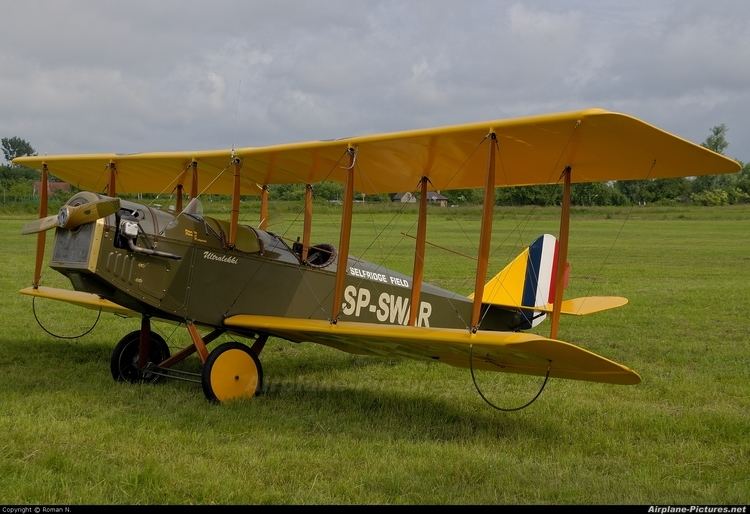
The Curtiss JN-4 is possibly North America's most famous World War I aircraft. It was widely used during World War I to train beginning pilots, with an estimated 95% of all trainees having flown a JN-4. The U.S. version was called "Jenny", a derivation from its official designation. It was a twin-seat (student in front of instructor) dual-control biplane. Its tractor propeller and maneuverability made it ideal for initial pilot training with a 90 hp (67 kW) Curtiss OX-5 V8 engine giving a top speed of 75 mph (121 km/h) and a service ceiling of 6,500 ft (2,000 m). The British used the JN-4 (Canadian), along with the Avro 504, for their primary World War I trainer using the Canadian Aeroplanes Ltd. indigenous variant. Many Royal Flying Corps pilots earned their wings on the JN-4, both in Ontario and later in winter facilities at Camp Taliaferro, Texas.
Although ostensibly a training aircraft, the Jenny was extensively modified while in service to undertake additional roles. Due to its robust but easily adapted structure able to be modified with ski undercarriage, the Canadian Jenny was flown year-round, even in inclement weather. The removable turtle-deck behind the cockpits allowed for conversion to stretcher or additional supplies and equipment storage, with the modified JN-4s becoming the first aerial ambulances, carrying out this role both during wartime and in later years. Most of the 6,813 Jennys built were unarmed, although some had machine guns and bomb racks for advanced training. With deployment limited to North American bases, none saw combat service in World War I.
The Curtiss factory in Buffalo, New York, was the largest such facility in the world, but due to production demands, from November 1917 to January 1919, six different manufacturers were involved in production of the definitive JN-4D. Production from spare or reconditioned parts continued sporadically until 1927, although most of the final orders were destined for the civil market in Canada and the United States.
Like the re-engined 'JN-4H' version of the most-produced JN-4 subtype, the final production version of the aircraft was the JN-6, powered by a Wright Aeronautical license-built, 150-hp (112-kW) Hispano-Suiza 8 V-8, first ordered in 1918 for the US Navy. A floatplane version was built for the Navy which was so modified, it was essentially a different airframe. This was designated the N-9. In U.S. Army Air Service usage, the JN-4s and JN-6s were configured to the JNS ("S" for "standardized") model. The Jenny remained in service with the US Army until 1927.
After World War I, thousands were sold on the civilian market, including one to Charles Lindbergh in May 1923, in which he then soloed. Surplus US Army aircraft were sold, some still in their unopened packing crates, for as little as $50, essentially "flooding" the market. With private and commercial flying in North America unhampered by regulations concerning their use, pilots found the Jenny's slow speed and stability made it ideal for stunt flying and aerobatic displays in the barnstorming era between the world wars, with the nearly identical Standard J-1 aircraft often used alongside it. Some were still flying into the 1930s.
JN-4 airframes were used to produce early Weaver Aircraft Company / Advance Aircraft Company / Waco aircraft, such as the Waco 6.
Notable firsts
Between 1917 and 1919, the JN-4 type accounted for several significant aviation "firsts" while in service with the US Army Signal Corps Aviation Section and the United States Marine Corps (USMC) including flying the first U.S. Air Mail in May 1918.
In a series of tests conducted at the U.S. Army's Langley Field in Hampton, Virginia, in July and August 1917, the world's first "plane-to-plane" and "ground-to-plane, and vice versa" communications by radiotelephony (as opposed to radiotelegraphy which had been developed earlier) were made to and from modified US Army JN-4s by Western Electric Company (Bell Labs) design engineers Lewis M. Clement and Raymond Heising, the developers of the experimental wind generator-powered airborne wireless voice transmitter and receiver equipment.
In early 1919, a United States Marine Corps (USMC) JN-4 was also credited with what is believed to be the first successful "dive bombing" attack during the United States occupation of Haiti. USMC pilot Lt Lawson H. Sanderson mounted a carbine barrel in front of the windshield of his JN-4 (previously, an unarmed trainer that had a machine gun mounted in the rear cockpit) as an improvised bomb sight that was lined up with the long axis of his aircraft, loaded a bomb in a canvas mail bag that was attached to the JN-4's belly, and launched a single-handed raid at treetop level, in support of a USMC unit that had been trapped by Haitian Cacos rebels. Although the JN-4 almost disintegrated in the pullout, the attack was effective and led to Sanderson in 1920 developing further dive-bombing techniques to provide Marine pilots with close aerial support to infantry comrades.
Variants
Although the first series of JN-4s were virtually identical to the JN-3, the JN-4 series was based on production orders from 1915–1919.
"Specials"
Military operators
; Brazil
Civil operators
Survivors
About 50 Jennys survive in museums and with private owners.
Specifications (JN-4D)
Data from The Encyclopedia of World Aircraft
General characteristics
Performance
The "Inverted Jenny" stamp
The "Inverted Jenny" (C-3a) is a 24-cent 1918 US Air Mail postage stamp printing error in which the blue central vignette of US Army Curtiss JN-4HM #38262, the nation's first mailplane, appeared as "inverted" on a single sheet of 100 stamps owing to an inadvertent error made by the operator of a hand-rolled spider press by printing the blue vignette impressions upside down after the red frames had previously been printed on the sheet. As the Jenny vignette was only inverted on one sheet, this stamp represents the rarest and most valuable known USPOD printing error of all time. A single example (sheet position 57) sold at auction in 2007 for $977,500.00.
Notable appearances in media
In 1921, Lee De Forest made a short film Flying Jenny Airplane in his Phonofilm sound-on-film process. The film depicted a JN-4 flying, and recorded the sound of the Jenny, as well. The short documentary was the first production of the De Forest Phonofilm company.
Among many later films depicting the barnstorming era when the Jennys "ruled supreme" and played a feature role, was The Spirit of St. Louis (1957) and The Great Waldo Pepper (1974). In The Court Martial of Billy Mitchell (1955), authentic OX-5 Jennys were showcased as United States Army Air Service training aircraft. Broadcast on April 15, 1987, by PBS, the National Geographic special entitled "Treasures from the Past" featured the restoration and first flight by Ken Hyde of a JN-4D that would go on to win the "Lindy Award" at the EAA AirVenture Oshkosh '87.
A Jenny appears in the 1963 film It's a Mad, Mad, Mad, Mad World.
Musician Al Stewart refers to the Jenny in his song "The Immelman Turn" (2005) in which a barnstorming acrobat falls to his death from a Curtiss Jenny attempting the maneuver in a 1923 airshow.
On the TV show The Unit season 4: episode 11 "Switchblade", new character Joss Morgan of Morgan Aviation Company owns a 1917 Curtis "Jenny" and cracks a piston and ends up showing up at the Unit's front fake aviation business looking for help fixing it. She meets her future husband, unit-member Sgt. 1st Class Charles "Carlito" Grey about the piston.
He then gets to buy her a drink for telling her what plane the piston was from. He then trades the broken piston for a real piston from the National Air Museum through a friend for his Colt BBQ gun. She was going to show him the "outside loop maneuver".
